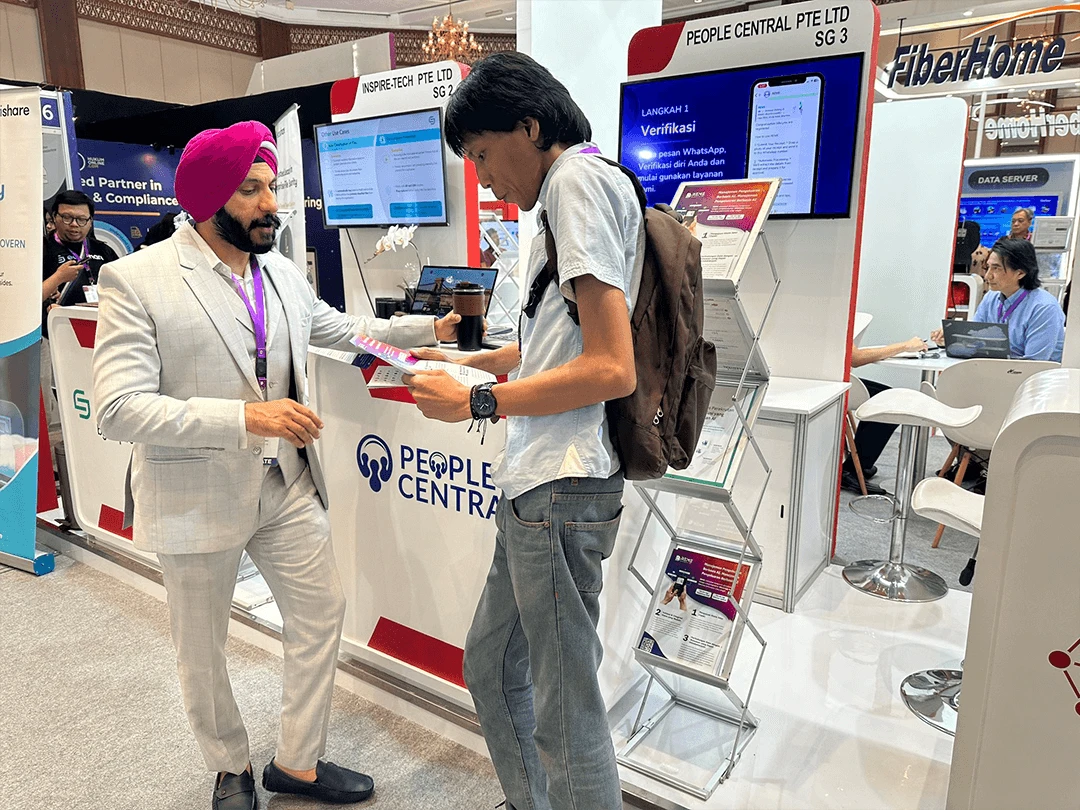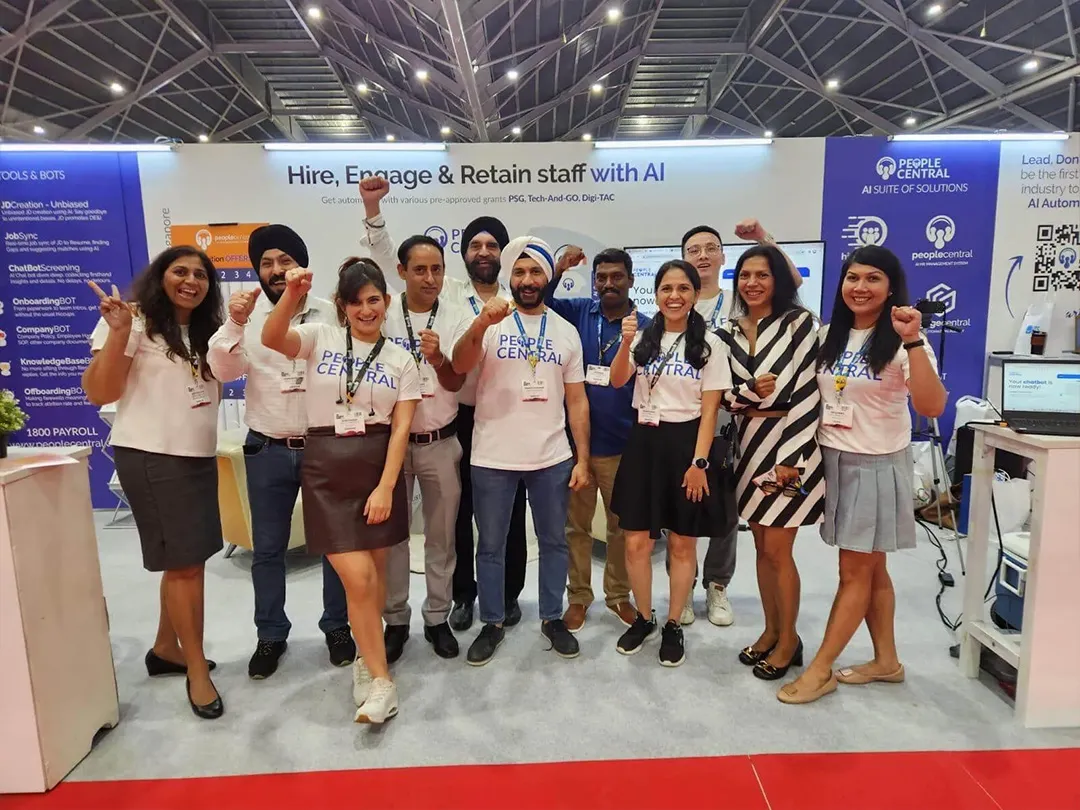Onboarding is an integral HR function, crucial for the success of both new hires and the organisation. A strategically-defined onboarding process is important to help improve employee retention, boost engagement, and increase productivity. Unfortunately, only 12% of employees believe that their organisation has a great onboarding process in place. That means 88% of organisations do not onboard efficiently.
In today’s fast-paced business world, efficiency is key. The onboarding process for new employees is no exception. It’s crucial to seamlessly integrate new team members into your organization, and automation can be a game-changer in this regard. This article will explore the onboarding checklist, and best practices for automating the onboarding process, ensuring a smooth transition for new hires.
How to Automate the Onboarding Process
Automating the onboarding process involves a structured approach to welcome and integrate new employees into your company. Here’s a comprehensive guide on how to make the process efficient and effective:
Setting the Stage
To get started on automating your onboarding process, you need a well-defined plan. This plan should encompass various aspects, from the necessary paperwork to the first-day experience.
Technology Integration
Incorporating technology can significantly streamline the onboarding process. Utilize software and tools for tasks like document management, e-signatures, and HR management systems.
Preparing Documentation
Create digital versions of all necessary documents, including contracts, handbooks, and tax forms. Ensure that these documents are easily accessible to new hires.
Employee Portals
Develop an employee portal or intranet where new hires can access information, policies, and resources. This portal should also include a directory of key personnel.
E-Learning Modules
Develop e-learning modules covering company policies, culture, and any necessary skills. These modules can be completed at the employee’s own pace.
Task Lists
Automate task lists for the onboarding training process, such as setting up email accounts, assigning mentors, and scheduling training sessions.
Personalized Welcome
Create a personalized welcome message or video from the CEO or team leader. This personal touch can make new employees feel valued.
Automated Reminders
Use automated reminders to ensure that all necessary tasks are completed in a timely manner. This could include reminders for document submissions, training sessions, and probationary reviews enhancing employee onboarding experience.
Feedback Mechanism
Implement a feedback mechanism to assess the effectiveness of the onboarding process and make continuous improvements.
Continuous Learning
Extend the onboarding process into continuous learning and development. Offer resources for employees to enhance their skills and grow within the company.
The Challenge of Traditional Onboarding
Manual processes have long been the norm in the employee onboarding process, but they come with a significant administrative burden. Handling repetitive tasks and manual onboarding activities not only consumes time but also increases the risk of errors. This traditional approach may hinder employee satisfaction and retention rates.
Advantages of Employee Onboarding Automation
Employee onboarding software and automation tools have revolutionized the onboarding stage. They allow for a more engaging experience and provide valuable feedback to both employees and employers. Here’s how employee onboarding automation can transform your onboarding process:
1. Seamless Onboarding Experience
Automated onboarding processes ensure that new employees have a seamless onboarding experience. From automatic emails with relevant documents to personalized onboarding tasks, the employee onboarding automation provides a quality onboarding process from day one.
2. Improved Time Management
By eliminating manual tasks, you enable faster resolution of onboarding tasks. This not only saves valuable time but also enhances the standard onboarding practices. With workflow automation, you can efficiently manage your onboarding technology, employee onboarding programs, and even customer onboarding processes.
3. Enhanced Communication
Utilizing communication tools and a business communications platform within your automated onboarding process fosters a more engaging and personalized experience. It maintains the human touch in onboarding while reducing security risks and the risk of errors in the communication process.
4. Employee Feedback and Interaction
Automation allows for the collection of valuable feedback from employees, which can be used to improve the quality of onboarding. Through employee feedback mechanisms, you can tailor the onboarding experience to meet specific needs.
5. Self-Service Resources
Automated onboarding technology often includes self-service resources, such as training programs, company resources, and a resource database. This empowers new hires to access information, resource documents, and training programs at their convenience, contributing to a successful onboarding process.
6. Task Lists and Calendar Assistant
Using calendar assistant and task lists in the onboarding automation tools simplifies onboarding tasks and provides a clear user onboarding flow. New hires can efficiently navigate through onboarding activities, ensuring that nothing is overlooked.
The Human Touch
While automation is a powerful tool, it’s essential to balance it with human interaction. Employee onboarding automation should complement, not replace, the valuable personal connections that form during the onboarding process. This approach retains the human touch, ensuring positive onboarding experience for employees so that they feel engaged and part of the team.
Automating the employee onboarding process enhances the efficiency, security, and quality of onboarding. It transforms manual onboarding processes into streamlined, engaging, and personalized experiences. By embracing onboarding automation, you can boost employee retention rates and contribute to the long-term success of your organization.
Conclusion
Automating the onboarding process is a strategic move that can bring numerous benefits to your organization. It not only saves time and resources but also ensures a smooth transition for new employees. By following the steps outlined in this article, you can improve efficiency and make your employees’ integration for a seamless onboarding workflow.
FAQs
Ques 1. Is automating the onboarding process cost-effective?
Ans. Yes, automation can significantly reduce administrative costs and save time, making it a cost-effective solution for businesses.
Ques 2. Can automation maintain a personal touch in the onboarding process?
Ans. Absolutely. Personalized messages and welcome videos can be integrated into the automated process to make new employees feel valued.
Ques 3. What software can help automate onboarding?
Ans. There are many options available, including BambooHR, WorkBright, and Zenefits, which are tailored to various business needs.
Ques 4. How can automation improve the accuracy of onboarding?
Ans. Automation reduces the risk of human error in tasks like document management and data entry, ensuring accuracy.
Ques 5. Is it necessary to have an employee portal for onboarding automation?
Ans. While not mandatory, an employee portal can centralize information and resources, making the onboarding process smoother.
Ques 6. Can automation enhance the employee experience during onboarding?
Ans. Yes, automation can make the process more efficient, allowing new employees to focus on their roles rather than administrative tasks.








 5
5


























